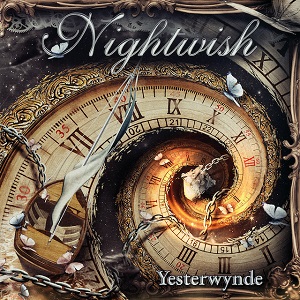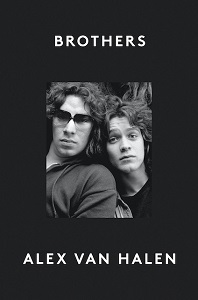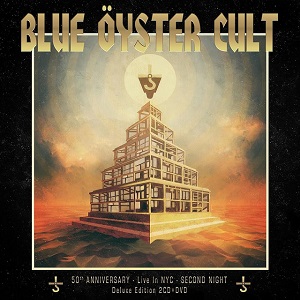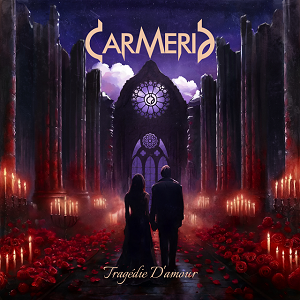John Storyk Recalls Designing ACE FREHLEY's Ace In The Hole Studio
March 19, 2013, 11 years ago
KissFAQ has conducted an interview with legendary studio architect/acoustician John Storyk. Storyk, who designed the famed Electric Lady Studios, discussed the design and construction of ACE FREHLEY's Ace in the Hole Studio in Wilton, Conn., a project that began in 1979 and ultimately took approximately one year. Storyk recalled his initial consultation with Frehley, the challenges of this particular studio design, the budget, and more.
The following are excerpts from Storyk's interview with KissFAQ's Tim McPhate:
KissFAQ: John, how did you come to be contracted to design Ace Frehley's studio? Was it through Eddie Kramer??
John Storyk: "Yes. I'm 99.9 percent sure this is correct. At the time Eddie was very involved with KISS as you know. He did a number of their albums and I think he was pretty close with Ace. Ace had, more or less, just gotten his new home in Connecticut, right on the Connecticut-New York border, and wanted his own studio. And Eddie and I, of course, had been friends since 1969. He's my daughter's godfather. Basically, Eddie said to Ace, 'This is the only guy to do it.' And Ace said, 'Great. Let's do it.' And I remember he sent a limousine to pick me up and I went up to his house up in Wilton, he had already moved into the house. And he basically outlined that he wanted a private home studio."
KF: According to KISS & Sell, a book authored by KISS' former business manager Christopher Lendt, "Ace's dream was to have a recording studio in his home." Was this how you recall the project being described to you?
JS: "100 percent. You know, it's kind of funny because artists having their own studios at home now is like buying a loaf of bread. It's an every day occurrence. It's not a big deal. Then it was a slightly new idea for an artist to have a 'commercial-grade' studio. When I say that, I mean a glorified recording studio. There was nothing non-commercial about it other than the fact that it was not going to be a commercial studio. And also, it wasn't a giant studio - Ace didn't need a giant studio. He needed room for three, four musicians. So the idea of having that was a little newer then it is now. It all took place in a relatively short meeting. I knew KISS' music, liked some of it, didn't like other parts of it, but enjoyed the energy. I knew nothing about any of the members personally. To be honest with you, I didn't even know what they looked like, from the makeup. I got up there one morning and met Ace and he reviewed very quickly what he wanted. What he wanted was of course not what we ended up building, and that might segue into the next question."

KF: In this case, I can only go by what I have read. Initially, I believe the initial budget was in the neighbourhood of $60,000 and the studio was to be more "modest," according to Lendt's book. Do you recall this initial budget?
JS: "Well, that's true, but that was not the dynamic discussed at our initial meeting. That is true and I'm sure that a business manger would present that from that perspective because that's his job as a business manager. My guess is somewhere between Ace's vision and the business manager watching the money, that's what they started out with. And you're absolutely right, they didn't spend anywhere near that money. It was closer to 10 times that amount when we were done. From my perspective, our meeting started in a very different way. Which was that Ace had very quickly described what he wanted, which was basically a modest-size studio, [and] budget was not discussed, basically to handle three, four, five musicians, mostly himself, practicing, recording ... maybe the guys would come over, et cetera, et cetera. And, now comes the big point, he wanted it in his basement. He wanted it in the basement of his house. I said, 'OK. That sounds like a good idea. Let's take a look at the basement.' At which point, literally, and this was very quick - I don't think I spent more than one hour there, maybe two - I looked at the basement. And it took me, even though his was a long time ago, about 19 seconds to basically turn around to Ace and tell him "this was not going to happen. At least this is not going to happen with me in the basement. Because first of all, your basement has only got 8 foot ceilings. Plus it's got pipes and wires, and this and that." Actually, it was big enough, and there was enough of it, because it was a big house, but I turned to Ace, 'There's no way we can isolate this in your basement. It's impossible. You don't have enough height. And also it's a wood building. It's not going to work. It's going to be very loud obviously. You're going to wake up your wife. It's not going to happen. Maybe I can think about digging down, but it'd be a major project and I have no idea whether it's even possible. And this conversation lasted a very short amount of time. And you know, it was almost like I've got a job and I'm talking myself out of a job about as quickly as I'm meeting Ace. But I had to tell him that, 'This is the truth.' At which point, I had walked around the property - I think he had like five acres - and I came into the house. I said, 'You know, Ace, you're up here on a beautiful [piece of property]. Why don't you just build a small little barn in your backyard? Build it out of concrete block, side it with wood so it will look just like a house or anything you want, and then you just walk to the studio and you can make as much noise as you want and everything will be perfect. This will be really easy.' At the time, I had just finished doing the project for Albert Grossman in Bearsville working on Bearsville Studios (in New York) and I had a lot of experience with those [type of studios]. And that's exactly what we did -- we basically made a concrete block bunker look like a wood building. And I said to Ace, 'This would be so much simpler. To try and do this in the basement would be impossible.' And he just looked at me and said, 'No. I'm from the Bronx. I don't want to walk outside to my studio. I want to just get up, put on my slippers and go out to the studio.' And I said, 'Well, you know, Ace, what do you want me to do, you want to put the studio underground and connect with a tunnel to your house?' I said this as a joke. And I remember this almost exactly - I was literally joking, and I was half-kidding with him. I was trying to see if I could flush out some kind of solution. At which point, Ace turned to me and said, 'That's a really good idea. Let's go do that.'"

KF: On a scale of 1-10, how challenging was this particular studio design???JS: "For me, at that point in my life, it was a 10. Now it would be a 5. But I was much younger then [and it] was before I met my wife. My company is Walters-Storyk Design Group. Walters is my wife, Beth Walters. It's kind of like I have two careers, before Beth and after Beth. But this job, it has to be more than 25 years ago."?
KF: Once you had that initial meeting with a client like Ace, what would have been the first step of the process in designing his studio??
JS: "Well that project happened in a slightly unusual way because, as I said, I never saw Ace again. So basically at that point, and this was not so good, it was a little bit goofy, I think we dealt with Eddie. Eddie became the mouthpiece between me and Ace and that was fine with me. Ace, you know, had his own qualities and stuff. I've been around a lot of celebrities and stars and that stuff doesn't interest me that much. So I was happy to deal with Eddie. Eddie is very grounded and he's an incredible engineer and my friend. So I did my drawings and then I took them to Eddie and he would have feedback, et cetera. And they would either be his comments or Ace's comments. The actual design was pretty quick because everything happened in that 10 seconds. I mean that's the real story. That's what happened. I jokingly said, 'What do you want me to do? Put it underground and connect it with a tunnel?' And he said, 'Yeah, that's a great idea. Let's go do that.' And that was it. Just like that."
The full John Storyk interview is available here.











